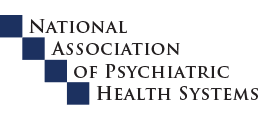Sierra Tucson offers effective, comprehensive treatment for individuals struggling with addiction and mental health concerns. Learn more about the signs and symptoms of marijuana abuse.
Understanding Marijuana Abuse
Learn about marijuana abuse
Marijuana is the most commonly abused illicit recreational drug in the United States. The term “marijuana” refers to dried sections (leaves, stems, and flowers) of the plant Cannabis sativa. This plant contains the chemical delta-9-tetrahydrocannabinol (THC), which is responsible for the high that users experience.
Marijuana is commonly ingested by smoking, either rolled into a cigarette or via a pipe or water bong. The drug can also be eaten (usually by being added to other foods during the cooking process) or brewed into a tea.
Marijuana is classified as a Schedule I drug in the United States, which means that the U.S. federal government has determined that the drug has no currently accepted medical use and a high potential for abuse. However, as of January 2014, two U.S. states have legalized marijuana for recreational consumption by adults, and 21 other states have passed legislation to allow its use in treatment of certain medical conditions.
Statistics
Marijuana abuse statistics
After results from a distribution of surveys were compiled, it was determined that approximately 69 million people in the United States alone have used marijuana at some point in their lifetime. Furthermore, 10 million people admitted to having used the substance in the month immediately prior to taking the survey. Additional estimates state that approximately 6,000 Americans experiment with using marijuana for the first time each day. Fortunately, treatment options are available that can help abusers of marijuana overcome their addiction and rediscover a sober life.
Causes and Risk Factors
Causes and risk factors for marijuana abuse
Several factors can place an individual at increased risk for abusing marijuana. Such factors are described briefly in the following:
Genetic: Considerable research indicates a genetic predisposition for substance abuse and addiction. For example, individuals whose parents struggled with addiction are much more likely to develop an addiction themselves than are people who do not have addiction in their family history. Researchers have identified as many has 266 genes that they believe may play a part in raising or lowering a person’s predisposition for developing an addiction.
Environmental: Having parents, other close family members, or friends who openly abuse marijuana will significantly increase the odds that an individual will engage in similar behavior. Also, individuals who have experienced trauma (especially child abuse) are at increased risk of engaging in recreational marijuana abuse, as are people who live in areas where the drug is readily accessible and where there is little to no social pressure against abusing the drug.
Risk Factors:
- Close family members who have abused or become addicted to drugs
- Pressure from friends or family members
- Exposure and access to marijuana from a young age
- Poor anger management and stress management skills
- Depression, panic/anxiety, and other mental health disorders
Signs and Symptoms
Signs and symptoms of marijuana abuse
The signs and symptoms of marijuana use will vary from person to person, depending upon a number of factors. The following are among the more common indicators that a person has been abusing marijuana. The more signs and symptoms a person displays, the greater the likelihood that they may be abusing marijuana or engaging in a similarly destructive behavior.
Behavioral symptoms:
- Changes in peer group (especially among young adults)
- Withdrawal from family members and previously close friends
- Unexplained decline in performance on the job
- Lying, secretiveness, and other deceptive actions
- Eating binges, often involving junk food or fast food
- Declining attention to grooming and personal hygiene
- Possession of drug paraphernalia (especially roach clips, small pipes, and water bongs)
- Fits of talkativeness, laughter, and giggling
Physical symptoms:
- Diminished coordination and perception
- Slowed reaction time (poor reflexes)
- Fatigue and lethargy
- Increased heart rate and high blood pressure
- Distinct odor
- Dry mouth
- Weight gain
Cognitive symptoms:
- Confusion and/or disorientation
- Sensory distortion
- Inability to focus or concentrate
- Problems with memory
- Difficulty tracking the passage of time
- Inability to organize & express coherent thoughts
Psychosocial symptoms:
- Panic and/or anxiety
- Feelings and expressions of paranoia
- Oscillating between euphoria and depression
- Mood swings
- Acting in an agitated or irritable manner
- Loss of interest in activities that were once important
Effects
Effects of marijuana abuse
Marijuana abuse puts users at risk for both short- and long-term health effects. Depending upon the amount of marijuana a person has been using, and the length of time they have been using the drug, these effects can range from bothersome and temporary to devastating and permanent.
The following are among the more common physical and psychological effects of marijuana abuse:
- Reduced resistance to common illnesses (such as colds)
- Increased risk for lung damage and infections of the upper respiratory system
- Greater likelihood of heart attack
- Weight gain to the point of obesity
- Sexual dysfunction
- Increased risk of developing certain types of cancer
- Bruises, sprains, and broken bones due to sensory distortion and impaired coordination
- Abuse of and addiction to alcohol and other drugs
- Occupational setbacks due to poor performance
- Legal problems (both from the drug use itself and from associated reckless behaviors)
- Development of delusions and hallucinations
Co-Occurring Disorders
Marijuana abuse and co-occurring disorders
Individuals who abuse marijuana often have co-occurring disorders that may have led to or been caused by the substance abuse. Failing to identify and address these co-occurring disorders can significantly undermine the effort to stop using and start pursuing long-term sobriety.
- Attention-deficit/hyperactivity disorder (ADHD)
- Bipolar disorder
- Chronic pain
- Depression
- Learning disabilities and disorders
- Migraine headaches
- Panic disorder
- Other anxiety disorders
- Obsessive-compulsive disorder
Withdrawal and Overdose
Effects of marijuana withdrawal and overdose
Individuals who abuse marijuana can become both tolerant and dependent. This means that they may need increasingly larger (or more potent) doses to achieve the same high that previously resulted from smaller doses, and that the absence of the drug can trigger several physical and psychological symptoms.
The following are among the more common symptoms of marijuana withdrawal:
- Anger and agitation
- Inability to focus
- Insomnia
- Loss of appetite
- Depression
- Vivid disturbing dreams
- Drastic mood swings
- Dizziness and shakiness
- Impotence













